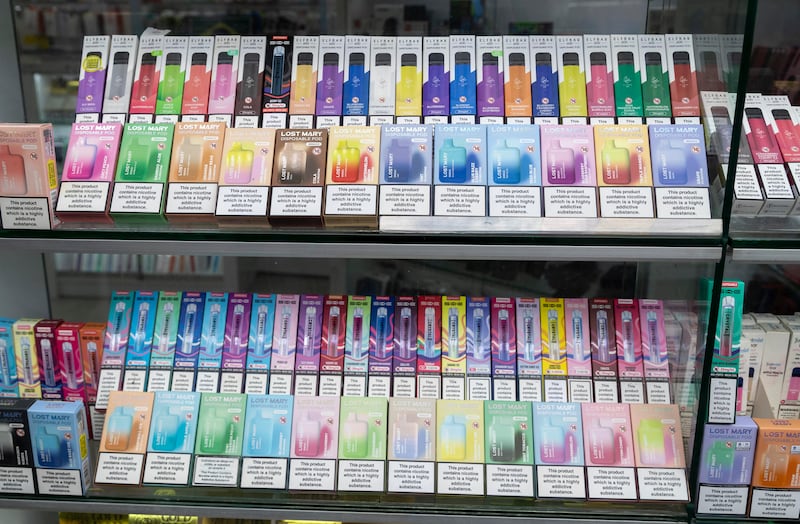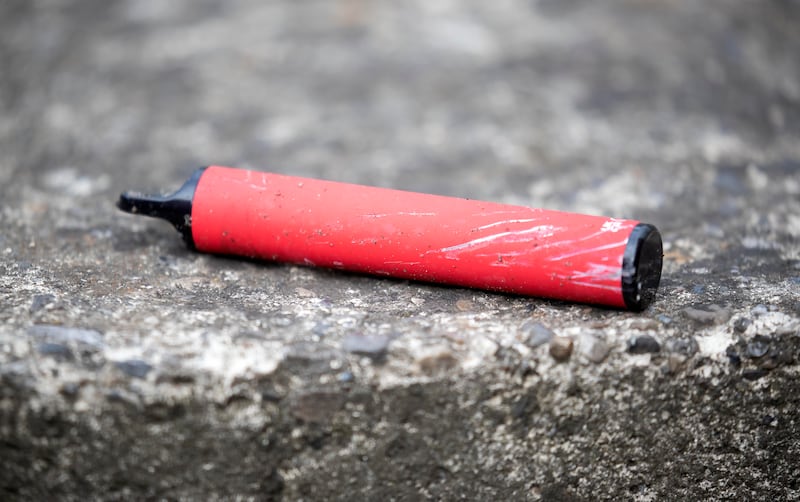The Government is cracking down on vaping, right?
It’s rolling out “serious restrictions” including the banning of disposable vapes and restricting the sale of flavours and prohibiting point-of-sale advertising displays.
But vaping is much better than smoking?
Smoking kills thousands of people in Ireland every year and is financially ruinous, meaning the “better than” bar is very low. Vaping advocates say the products do less harm than tobacco and contains fewer deadly chemicals – notably tar.
What does the Government think?
“I see vaping as the revenge of the tobacco industry in terms of getting people hooked on nicotine again,” Tánaiste Micheál Martin said last year, a view echoed by Taoiseach Simon Harris this week.

What do doctors say?
A position paper from the Royal College of Physicians of Ireland’s faculty of paediatrics described vaping as harmful with significant long-term health risks for children and young people, whose brains and bodies are still developing.
READ MORE
Children? But vaping is used by adults looking to quit?
It is sometimes marketed as a cessation device, but also as a fun product. One well-stocked shop visited by The Irish Times was selling flavours such as fusion berry and lemonade, cherry cola, watermelon, triple mango, peach ice, gummy bear, fresh mint, kiwi passion guava ice, banana blast and cotton candy ice. According to some estimates, there are as many as 16,000 different flavours on the market.
Cotton candy ice? Sounds delish.
It does. And we haven’t got to the colours. All the colours of the rainbow are represented. It’s a far cry from the drab colouring and the choking smell of Major or Rothmans many of us once knew.
It’s almost like these highly-addictive products aim to attract children?
Indeed. The vaping sector says it does no such thing and it is illegal to sell vape products to minors.
But children still vape?
Big time. “It’s the biggest spread of addiction this country has ever seen,” one whistleblower within the industry told The Irish Times last year. “Hundreds of thousands of children have been hooked.”
About 13 per cent of people between the ages of 12 and 17 had vaped in the last 30 days, according to HSE research from 2022, and Minister for Health Stephen Donnelly said this week that “companies are very cynically targeting children ... We know a lot of the colouring and the packaging is targeted at children and young people”.

Is vaping popular in the broader sense?
Very. In the 12 months to the end of May 2021 there were 5.6 million units of vape sold in Irish shops. In the year to May 2022, the total jumped to 8.06 million and by the summer of last year the figure had more than trebled to 26.3 million sales.
Maybe there are just loads of people giving up smoking and vaping instead?
That would account for some of the growth but the numbers don’t add up as more people are taking up vaping than are stopping smoking.

Is the sale of vapes to children the only problem?
No. There are also environmental concerns, particularly when it comes to disposable vapes which sell for less than a tenner. Many are imported from China, so there is a carbon footprint element, but of more concern perhaps are the very small lithium batteries which, if not disposed of correctly, can leech into the ground and leave behind toxic residues. Vapes also contain manganese, nickel and cobalt, which could all be reused but often are not.
As many as 10 per cent of the population now vape with two-thirds saying they disposed of vapes incorrectly, with nearly half wrongly thinking they could be just thrown in the bin.
- Join The Irish Times on WhatsApp and stay up to date
- Sign up for push alerts and have the best news, analysis and comment delivered directly to your phone
- Listen to our Inside Politics podcast for the best political chat and analysis
















